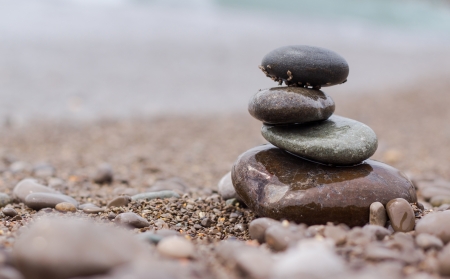Setting the Scene: British Homes, Emotional Baggage, and New Beginnings
Step inside any British home—whether a quaint Victorian terrace nestled along a cobbled street, a post-war semi radiating nostalgia, or a sleek city flat perched above bustling avenues—and you’ll find more than just bricks and mortar. The heart of a British dwelling beats with memories, heirlooms, and those curious little objects that seem to multiply over time. From tea-stained letters tucked in drawers to mismatched china lining the shelves, our homes whisper stories of generations past. Yet, as comforting as these keepsakes may be, they often carry emotional weight that lingers like London fog. The echoes of old loves, losses, and unfulfilled dreams collect in corners alongside dust and forgotten trinkets. In Britain, we’re known for our stiff upper lips, but beneath this calm exterior lies a yearning for renewal—a desire to shed what no longer serves us. As the seasons turn and daylight stretches across the horizon once more, many of us feel an instinctive pull towards new beginnings. But how do we clear space for fresh energy without losing touch with what makes our homes so uniquely ours? This is where the ancient art of Feng Shui meets modern British life: offering not just a way to declutter rooms, but to release emotional baggage and invite clarity into our lives.
2. Understanding Feng Shui: Eastern Wisdom Meets British Sensibility
Feng Shui, with its ancient roots in Chinese philosophy, is an art of harmonising people with their environment. At its core, this practice revolves around the flow of energy—‘Qi’—and the balance between the five elements: wood, fire, earth, metal, and water. Yet, when these foundational principles journey west and cross into the tapestry of British life, something quietly magical happens: they adapt and resonate with our island’s unique history, architecture, and weather-worn charm.
Imagine a Victorian terrace overlooking misty Yorkshire moors or a Georgian cottage nestled amidst Cornish cliffs. Unlike the open courtyards and light-filled spaces of the East, many British homes are defined by cosy rooms, thick stone walls, and ever-changing skies. Here, Feng Shui becomes less about dramatic transformation and more about gentle renewal—finding clarity in cluttered corners and breathing new life into well-loved spaces.
The Five Elements through a British Lens
| Feng Shui Element | Traditional Symbolism | British Home Adaptation |
|---|---|---|
| Wood | Growth & Vitality | Oak beams, indoor plants on sash windowsills |
| Fire | Passion & Energy | Candles on mantelpieces, warm tartan throws |
| Earth | Stability & Nourishment | Cotswold stone floors, pottery mugs for tea |
| Metal | Clarity & Precision | Copper kettles, vintage brass doorknobs |
| Water | Flow & Abundance | Rain-soaked gardens, mirrors reflecting morning light |
This fusion honours both the spiritual heart of Feng Shui and the comforting rituals of British daily life. Whether it’s opening up a window to let in soft drizzle or arranging ancestral heirlooms with mindful intention, each choice weaves together heritage and hope.
The Spirit of Place: Weathering Change with Grace
The British climate—with its gentle mists, blustery winds, and golden rays that break through cloud—reminds us that change is constant. In Feng Shui terms, this means embracing fluidity. A home here is not just a shelter from storms but a living canvas where memories gather and new beginnings take root.
An Invitation to Pause and Renew
To reimagine your space through Feng Shui’s wisdom is to listen deeply—to both your inner world and the whispers of Britain’s storied landscapes. It’s about honouring what has been while making room for what could be—a gentle nod to tradition, with eyes firmly set on clear horizons.

3. The Garden Gate: Decluttering as an Act of Emotional Renewal
Imagine yourself standing before a weathered garden gate, paint flaking under the drizzle of a soft British afternoon. Beyond it, tangled brambles hint at forgotten corners and lost stories. In many ways, our homes – whether a sunlit Cornish cottage adorned with keepsakes or a snug London bedsit brimming with city bustle – mirror this very threshold between the past and the promise of something new.
Decluttering here is far more than simply tidying up. It is an act steeped in intention and symbolism, akin to pushing open that creaky gate and stepping into a fresh patch of possibility. As you sift through old letters tucked in biscuit tins or sort through mismatched mugs collected from village fêtes, each choice to keep or let go becomes a gentle honouring of your journey so far, while making space for what’s yet to come.
For many Brits, letting go can feel like turning away from heritage or sentimentality – those cherished memories woven into every nook and cranny. Yet, through the lens of Feng Shui, each cleared shelf and empty drawer doesn’t erase the past; it allows energy to circulate freely, unburdened by emotional clutter. The air shifts subtly – lighter, fresher, as if inviting a hopeful breeze off the moors straight into your sitting room.
It’s not just about ridding yourself of things, but about transforming the atmosphere of your home and heart. Whether you’re bagging up unworn jumpers for the local charity shop or finally recycling that stack of forgotten magazines, notice how your mood changes with every cleared space. There is a gentle release in letting go: grief turns to gratitude; nostalgia softens into anticipation.
The garden gate stands open now. With each mindful act of decluttering, you step further onto the path of emotional renewal, guided by both ancient wisdom and modern sensibility. Your home becomes not just a shelter from the British rain but a sanctuary where clarity reigns – a place where your spirit can stretch toward clear horizons.
4. Sacred Spaces: Crafting Calm in the British Interior
Within the comforting walls of a British home, every nook holds echoes of the past. To truly move from a cluttered history to a horizon of emotional renewal, it’s essential to intentionally shape your interiors into sacred spaces. This is more than just tidying up—it’s about infusing everyday rooms with soul, ritual, and a distinct sense of British character.
Start by identifying which room—or corner—calls out for serenity. Perhaps it’s a sunlit bay window overlooking an English garden, or a snug alcove warmed by the fire. Let your intuition guide you, recognising where energy feels stagnant or unsettled. Then, using principles inspired by Feng Shui and grounded in local tradition, transform these ordinary spaces into personal sanctuaries.
Bringing Soul to the Setting
With each object you choose, consider its story and its resonance. A vintage teacup passed down generations might rest on a reclaimed wood shelf; fresh-cut lavender from the garden could grace the windowsill; a beloved novel sits within arm’s reach for quiet moments. These tokens are not mere decorations—they are anchors for memory and intention.
Mindful Placement Meets Local Character
| Element | British Touch | Feng Shui Principle |
|---|---|---|
| Scent | Earl Grey diffuser or lavender sachets | Cleanses stagnant energy, encourages calm |
| Light | Soft lampshades or daylight through sash windows | Nourishes Qi, invites clarity |
| Textiles | Tweed throws, woollen rugs | Adds warmth, grounds energy |
| Sound | Distant church bells or gentle rain on glass | Punctuates routine, soothes the mind |
| Symbolism | Ceramic robins or fox motifs | Personal meaning, strengthens connection to place |
Cultivating Rituals in Your Sanctuary
Create daily rituals that honour both your emotional needs and the rhythms of British life. It might be a morning cup of tea enjoyed in silence before the bustle begins, or lighting a candle at dusk as you reflect on your day. As you repeat these acts in your chosen space, you weave new threads into the fabric of your home—ones imbued with peace and presence.
This mindful approach does more than refresh your rooms; it gently renews your spirit. By blending Feng Shui wisdom with local heritage, you carve out havens that nurture both heart and home—a true British sanctuary for new beginnings.
5. Weathering the Storm: Staying Clear-Headed in a Rainy Climate
In Britain, the weather is as much a part of daily life as a cuppa or a walk along the High Street. The skies may shift from dazzling blue to moody grey in a heartbeat, and the rain can settle in for days, painting the landscape with its unique, persistent charm. Yet within these ever-changing skies lies a quiet wisdom—one that mirrors our emotional landscapes and offers inspiration for renewal through Feng Shui.
Embracing the Elements
Much like the British weather, our emotions ebb and flow, sometimes bright and uplifting, at other times shrouded in cloud. When rain taps gently at your windows or the wind whistles down your chimney, it serves as a gentle reminder that all things pass. In this spirit, clearing your living space of unnecessary clutter can be an act of self-care—a way to let go of the past and invite calm clarity into your home, no matter what’s brewing outside.
The Sanctuary Within
Your home is your sanctuary against unpredictable elements. By maintaining clear and intentional spaces, you create an environment where peace is possible even on the stormiest day. In true British fashion, think of your lounge not just as a room but as a haven: tidy up books left astray, keep the wellies by the door, and place a favourite blanket neatly on your armchair. These simple acts help foster an inner stillness that remains untouched by outside turmoil.
Harmony Through All Seasons
As each season turns—from misty mornings to golden autumns—let your living space reflect that gentle adaptability. Move furniture to welcome more light in winter, refresh décor with spring blossoms from local markets, and open windows to let summer breezes sweep away lingering stagnation. In aligning your surroundings with nature’s rhythms, you honour both tradition and transformation—key tenets of Feng Shui and British resilience alike.
So next time you watch raindrops trace paths down your windowpane, remember: every storm eventually clears. By tending to your home with intention and care, you nurture not just tidy rooms but also a serene mind—ready to greet whatever weather tomorrow may bring.
6. Cup of Tea Reflections: Stories of Renewal from Across the Isles
Gather round, pop the kettle on, and let’s settle in for some truly heart-warming stories from corners of Britain where Feng Shui has turned muddled spaces into havens of hope. Imagine a terrace in Manchester, once brimming with forgotten trinkets and family relics, now basking in gentle sunlight after its owner—Ms. Harris—bravely released old memories and rearranged her sitting room. She recalls, “After shifting my grandmother’s chest to face the garden, I felt lighter, as if the past could finally rest.”
Down in Cornwall, the Thomas family share tales over cream tea about how removing clutter from their hallway allowed laughter and new friendships to enter their home. Mr. Thomas jokes, “It’s as though we swept out the rainclouds and invited in Cornish sunshine!” Their story echoes across the country: a simple act of tidying can welcome possibility.
In London’s bustling rhythm, a young couple found peace by creating a small sanctuary with mirrors and soft lighting—a pocket of calm amidst city chaos. “We needed our flat to breathe,” says Lucy, pouring Earl Grey into delicate china. “Feng Shui gave us permission to curate not just our décor but our emotional space too.”
Even in the Scottish Highlands, where tradition runs deep, Mrs. MacLeod tells how letting go of inherited clutter opened up room for both cherished memories and fresh beginnings. Over scones by a peat fire, she shares, “It was less about throwing things away and more about honouring what truly mattered.”
These stories remind us that transformation need not be grand or dramatic; sometimes it’s as gentle as a spring breeze through an open window or as comforting as a shared cuppa after decluttering the parlour. Across Britain—from city flats to countryside cottages—those who embrace Feng Shui find renewed clarity and quiet joy, one mindful shift at a time.

